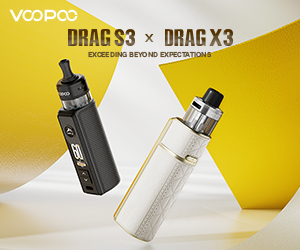If you have started investigating alternatives to smoking, you will no doubt have come across mention of Heated Tobacco Products. These relatively new nicotine delivery devices have increased in popularity in the last few years as their design and efficiency levels have been improved, but remain far less understood than other smoking alternatives like e-cigarettes.
So if you are wondering how these new tobacco products work, what difference heating tobacco makes compared to burning it, how much nicotine they contain, or how safe and legal they are, look no further. We delve into the potentially harm-reducing world of HTPs to help you decide if heated tobacco could be the best way for you to quit smoking cigarettes.
What are Heated Tobacco Products?
Heated Tobacco Products, often referred to as HTPs, are small electronic devices designed to deliver nicotine by heating tobacco without burning it. This is why they are also known as Heat-not-burn or smokeless tobacco products.
HTPs most commonly consist of a rechargeable battery, a heating element, and a chamber or slot where leaf tobacco (usually in a stick, like a very short cigarette) is placed. When the tobacco stick is pushed into the holding slot, it is pierced by the heating element inside. When the device is activated, the heating element inside the tobacco stick attains a maximum temperature of around 350°C. This is hot enough to cause the finely ground tobacco to begin breaking down (called pyrolysis) but not hot enough for it to combust.
As the tobacco breaks down, aromas, nicotine, and other organic compounds are released. In most HTPs, the heat also creates an aerosol of fine liquid particles. The tobacco flavors, nicotine, and other compounds mix with this vapor, providing the user with a lungful of something resembling smoke.
Tobacco companies began experimenting with heat-not-burn tobacco devices in the 1960s. The first commercial product, the Premier, made by R. J. Reynolds, was released to the public in 1988. Although the Premier device wasn’t a commercial success, tobacco companies continued to refine and improve HTPs, with the Eclipse and the Accord arriving in the mid-1990s and the Heatbar in 2007.
One of the most popular HTPs today is the IQOS. The first IQOS device was launched in Japan in 2014 (where, due to the ban on nicotine e-cigarettes, HTPs are a popular alternative to smoking) and elsewhere around the world a few years later. Compared to some HTPs, which were often styled to look like cigarettes or were strangely boxy, the IQOS is slim and sleek, looking more like a modern pod vape.
Are Heated Tobacco Products Less Harmful Than Cigarettes?
To date, there is still fairly limited data available about the potential harms and risks of using heated tobacco products, but they are almost certainly less harmful than smoking cigarettes. HTPs do contain leaf tobacco like a cigarette, albeit finely ground rather than shredded, but because the tobacco never combusts, far fewer harmful carcinogenic chemicals are released to be inhaled.
Almost all modern HTP devices have built-in controls that prevent a single tobacco stick from being used for more than six minutes or 14-15 puffs, whichever comes sooner. This helps to ensure that the tobacco does not heat or degrade enough for these more harmful chemicals to begin being generated.
In 2022, the FDA reclassified IQOS devices as modified-risk tobacco products, which means they can legally be marketed as providing reduced exposure to harmful chemicals compared to regular cigarettes. It is the first and only HTP to be allowed to make this claim. This isn’t evidence that heated tobacco products are completely harmless (the makers of IQOS cannot, for example, claim that using their device reduces the risk of disease) only that current evidence suggests they are the lesser of two evils.
A 2018 report by Public Health England based on peer-reviewed evidence available at the time states that:
“Compared with cigarettes, heated tobacco products are likely to expose users and bystanders to lower levels of particulate matter and harmful and potentially harmful compounds (HPHC). The extent of the reduction found varies between studies.”
It also states:
“The limited evidence on environmental emissions from use of heated tobacco products suggests that harmful exposure from heated tobacco products is higher than from EC (e-cigarettes), but further evidence is needed to be able to compare products.”
A more recent review of data published on PubMed in 2021 concluded that the use of HTPs appears to increase respiratory diseases and can negatively affect lung physiology, human bronchial epithelial cells, AEP, allergic rhinitis, and asthma. This review only looked at the potentially harmful effects of using HTPs, but not how the harm compared to that of smoking or vaping.
How Much Nicotine Is In Heated Tobacco Products?
The amount of nicotine in the tobacco sticks available for the best-known and most popular heated tobacco brands ranges between 0.3mg and 0.5mg. It has been estimated that only around 50% of the available nicotine is absorbed from each stick. Most tobacco sticks last for six minutes or 14 puffs (this can vary depending on the device and the tobacco stick being used), giving a nicotine per puff amount of just under 0.02mg. That’s based on the more common 0.5mg stick strength.
Compare that to cigarettes which contain an average of 12mg of nicotine, of which around 15% is absorbed. Assuming a cigarette also lasts for 14 puffs, each puff delivers 0.13mg. That’s around six times as much nicotine for each draw on a cigarette than for each draw on a heated tobacco device. Nicotine levels in cigarettes can be as high as 28mg, so some smokers could be getting more than three times this amount.
So how does vaping compare? There’s a lot of variation in the nicotine level of vape liquid, from 3mg/ml at the low end to more than 50mg/ml at the high end. The variation continues with the type of e-cigarette device you’re using, the power level, coil resistance, etc., so any numbers here won’t be absolute. One milliliter of vape liquid is estimated to provide 300 puffs, and around 50% of the available nicotine is absorbed into the body. Based on these figures:
- 3mg/ml strength: 0.005mg of nicotine per puff
- 20mg/ml strength: 0.03mg of nicotine per puff
- 50mg/ml strength: 0.08mg of nicotine per puff
As you can see, the average amount of nicotine absorbed when using a heated tobacco product is far less than from traditional cigarettes and comparable to a mid-strength e-cigarette/vape liquid. However, because HTP sticks are generally not available in different strengths, it is likely to be more difficult to increase or decrease nicotine intake than it is when using a vape.
Are Heated Tobacco Products Legal?
In the United States, heated tobacco products are regulated in the same way as both traditional tobacco and e-cigarette products. That means they need to be granted marketing authorization by the FDA under the FD&C Act as “New Tobacco Products”. To date, according to the FDA’s tobacco products database, only the IQOS and Eclipse HTP devices and a few different Heatstick options can legally be sold in the U.S.
Age restrictions for buying tobacco products, which, of course, include HTPs and e-cigarettes along with cigarettes and loose tobacco, vary slightly state-by-state but are mostly set at 21. If the state you live in deems it illegal to sell cigarettes to those aged under 21, the same will be true for heated tobacco products.
Around the rest of the world, heated tobacco products are generally legal in countries where tobacco and/or vaping is legal and almost always governed or restricted under similar laws. The legal age to buy will vary, and a few countries might treat the use of heat-not-burn tobacco in enclosed public spaces differently, but most are likely to lump HTPs in with regular cigarettes and e-cigarettes.
In a few countries where e-cigarettes are banned or restricted to medical prescription, such as Japan, HTPs are both legal and increasingly popular. Japan is now the leading consumer of heated tobacco products (by market share), with an estimated 43 billion tobacco sticks shipped to the country by Philip Morris International alone in 2023.
The Bottom Line
Heated Tobacco Products, or HTPs, are a novel and relatively new alternative to smoking that has been growing in popularity in recent years. HTPs use leaf tobacco, just like in a cigarette, but that tobacco is only heated to release the organic compounds it contains rather than being burnt. This means fewer carcinogens are released, making HTPs potentially far less harmful than smoking cigarettes. In the United States, the best-known heated tobacco product is the IQOS, mainly due to it being only one of two that are FDA-authorized.










Add comment